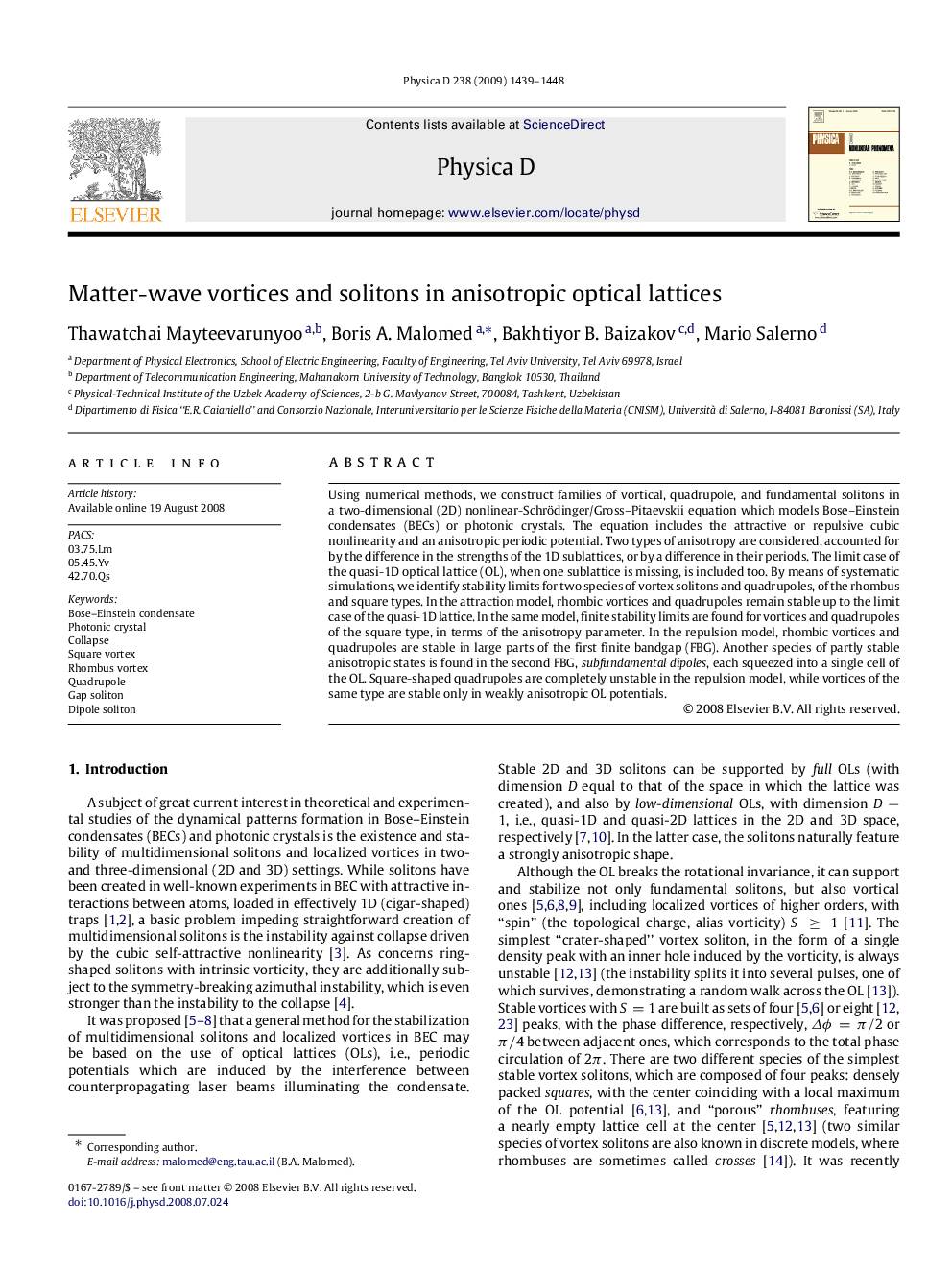| Article ID | Journal | Published Year | Pages | File Type |
|---|---|---|---|---|
| 1897900 | Physica D: Nonlinear Phenomena | 2009 | 10 Pages |
Using numerical methods, we construct families of vortical, quadrupole, and fundamental solitons in a two-dimensional (2D) nonlinear-Schrödinger/Gross–Pitaevskii equation which models Bose–Einstein condensates (BECs) or photonic crystals. The equation includes the attractive or repulsive cubic nonlinearity and an anisotropic periodic potential. Two types of anisotropy are considered, accounted for by the difference in the strengths of the 1D sublattices, or by a difference in their periods. The limit case of the quasi-1D optical lattice (OL), when one sublattice is missing, is included too. By means of systematic simulations, we identify stability limits for two species of vortex solitons and quadrupoles, of the rhombus and square types. In the attraction model, rhombic vortices and quadrupoles remain stable up to the limit case of the quasi-1D lattice. In the same model, finite stability limits are found for vortices and quadrupoles of the square type, in terms of the anisotropy parameter. In the repulsion model, rhombic vortices and quadrupoles are stable in large parts of the first finite bandgap (FBG). Another species of partly stable anisotropic states is found in the second FBG, subfundamental dipoles, each squeezed into a single cell of the OL. Square-shaped quadrupoles are completely unstable in the repulsion model, while vortices of the same type are stable only in weakly anisotropic OL potentials.
